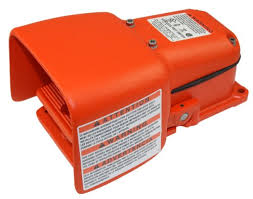- Joined
- Feb 13, 2017
- Messages
- 2,138
@Bi11Hudson . Bill - If the motor current is going through the pressure switch, and it sticks on start-up, would the kit keep going until the pressure safety valve lets go, and even then, keep going? Of course,it may be that the pressure switch kit has thru-line contacts rated for the motor, or operates some other internal stuff - I don't know.
I only mention it because a pressure switch I have here does not have the kind of contacts common for a motor relay, small little contacts, and is wired in a 24V circuit in series with the starter coil.
This also brings about the point that in big machinery, it is common to have a little 24V power supply transformer, and 24V relay coils, so that all the push-buttons, starts, stops, E-stops, whatever anyone might touch, and mounted externally, are operated with only fused a low voltage 24V on them.
Maybe this is more of an issue in UK, where the ring main is 240V 32A, so maybe not what one wants on and around over a machine. I always specified low voltage external kit for starting and stopping the big stuff. We exclude here the exotic stuff, like "intrinsically safe", for hazard area mining kit, which gets rather special.
That's affirmative, my compressor originally came from Sear's. Both the compressor and the (ASME) tank are "DeVilbis", the rest of the stuff is Craftsman.(Sear's) The contacts in the pressure switch are much too small to handle a 5HP startup, especially under load such as the compressor. Even with an unloader. . . That was my primary reasoning for adding the magnetic controller in the first place.
I had acquired it as junk and thought to myself "Now where would it be most useful?" I didn't have a table saw at the time or it might have ended up there. But in the long haul, the compressor would be the best place to use it. I installed it the first time the contacts failed. And converted the motor to 240 volts at the same time. Looking to reduce the line current.
And, to your question, the answer is YES, if the contacts welded I would be in deep do-do. The only "safety" on such machines is the pressure relief valve. I've never had the dubious experience of a duplex failure but thinking about it is frightening. And that on a good day. It could very well have happened. There is no indicator to note failure of the (purely mechanical) valve. It could fail and not be noticed for months.
You mentioned a low voltage magnetic controller for some of your equipment. Such is not the norm in the States with 120 volt supply. Most of our equipment, at the hobbyist level, is direct powered. The only machine I have that came with a magnetic controller is a (commercial??) planer. And the controls may well have been installed by the previous owner.
Outside of "industrial" installations and air conditioners, I haven't seen magnetic/low voltage controllers in "consumer" related products. It may well be the use of 240 volts supply(mains?) VS 120 volts supply. I'm not impressed with it, but that's the way it is. Most likely because it's cheaper and most manufacturers are looking at the "least cost" way of doing things.
Sorry, I could preach for hours on the safety VS cost of devices. There's no challenging the "Follow The Money" mind-set.
.
Last edited:


